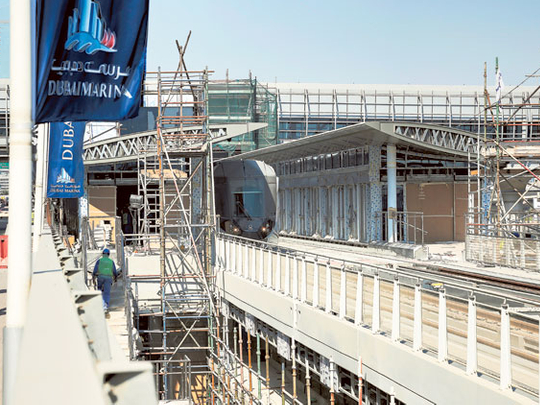
Recently, I was at a social gathering in the Marina area and I overheard a child asking his father a very innocent question. He wanted to know whether it would be faster to reach Marina by a plane or a car from the Mall of the Emirates.
This got me thinking. Well, a plane would have a faster travel time, but if you add the check-in, security and check-out time then you are better off walking to Marina from the mall. Perhaps you will reach earlier. Now let’s move on to the second mode of transport — car. Well it might take you a few minutes during non-peak hours but the story could be different during peak hours or if there is a meandering traffic jam.
A tramway is the ideal solution to counter major traffic woes in fast-growing cities. The story will be rewritten this November when the much awaited tramway in Dubai, also the region’s first, is expected to be launched. It can move in both the directions, irrespective of the traffic situation, and also ensure a faster and comfortable journey. Dubai Tram is slated to carry thousands of passengers a day.
Dubai will thus join other cities like New York, London, Toronto and Hong Kong with a tram system. This will be a huge success and will bring added value to the city’s existing state-of-the-art public transport system. Trams are efficient as they are fuel-effective and provide more capacity than buses thus enjoying much more popularity than other modes of transport.
Operational costs for trams are significantly lower than other comparable modes. They have a distinct advantage of being bi-directional, which translates into the fact that it can be built in congested areas and allow huge savings in rail infrastructure. Since trams would be much preferred than buses, residents of the area would tend to build their lifestyle around it. Car commuters are willing to transfer some of their trips to rail-based public transport instead of buses as seen in Europe and North America over the past 50 years.
Apart from providing better connectivity to the Dubai Metro network, the Al Sufouh tram is set to woo commuters by providing an improved flow of traffic in the city. Effective transport links between transport modes help to mould sustainable development through demand management. Better connectivity between these modes of transport can further bolster a city’s competitiveness.
The tramway hosts a range of benefits for both residents and tourists alike. Residents will stand to gain from the flow of traffic along the tram route as usage begins to increase, particularly in Jumeirah Beach Residence (JBR), which has 36 residential towers housing around 20,000 people in its 6,400 apartments, 305 retail outlets and 10 hotels. Millions visited ‘The Walk’ last year. With more people staying and visiting the area, there is bound to be a surge in demand for tram commuting.
The tramway will provide a huge relief and will be an alternate mode of transport for visitors of JBR who usually rely on taxis. This usually makes traffic snarls a daily routine in the area. Businesses will also stand to benefit as the tramway will increase the volume of people travelling into JBR apart from tapping the vast tourism potential of the area.
Parking woes in the area could also be resolved as many will prefer using public transport. Currently, parking is a deterrent for visitors and residents alike, specifically when there is bumper-to-bumper traffic between eight in the morning until midnight. These will ease considerably when the tram system becomes operational.
The tramway is definitely going to add significant value as it is poised to change the dynamics of property prices. The price hike would be pronounced in areas with easy access to the tramway. Those which have relatively poor transport links with lower property value could see a hike in value as the tramways pass through them — making the buildings accessible to the stations.
The proximity to high-capacity transit halts has proven to increase property rates, a phenomenon known as the ‘transit premium’. This has been true in the case of Jumeirah Lake Towers, a much sought after destination after getting connected with the Dubai Metro network. After the success of Dubai Metro, the Dubai Tram project could further change the dynamics of the real estate sector.
The writer is the Country Manager — UAE at Chestertons.











